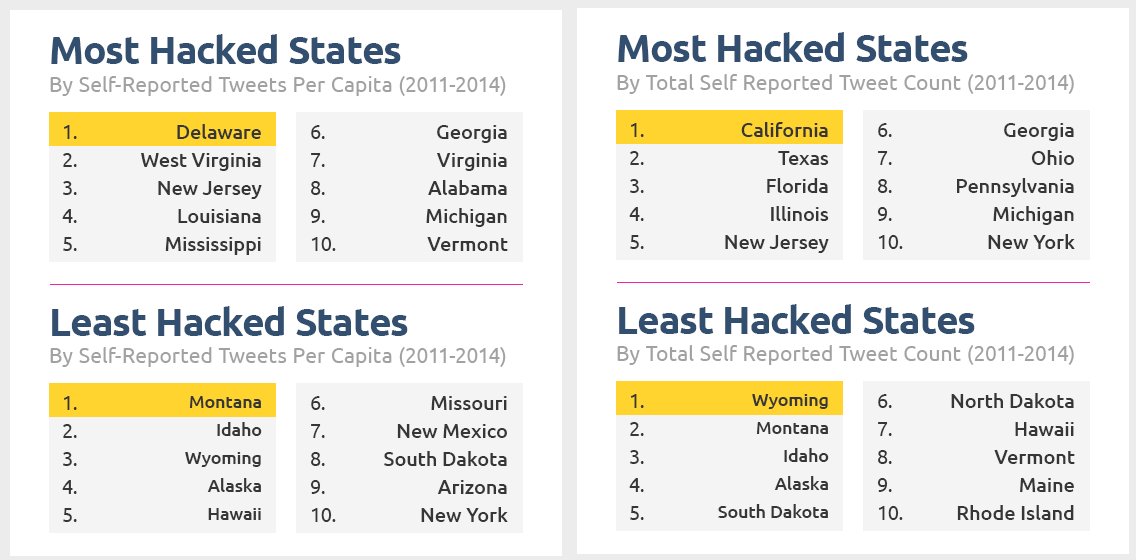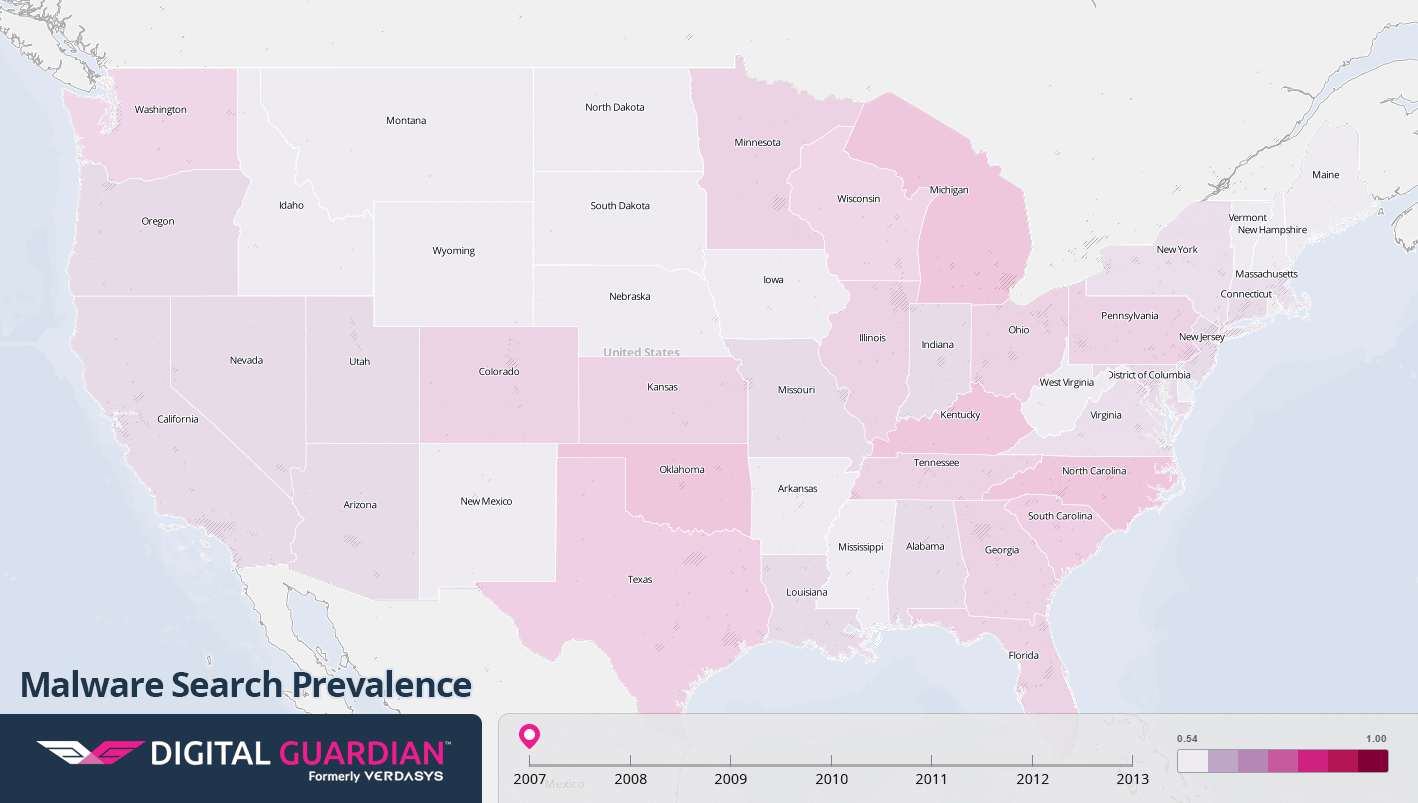Which U.S. States get Hacked the Most? Mapped: Hacking Attacks Across the Nation
| Contact Us | |
| Free Demo | |
| Chat | |
Which states think they get hacked or attacked the most?
Today, it seems that computer hacking and data breaches are constantly in the headlines. From Anthem's loss of up to 100 million customer records containing PII, to the massive leak of tech giant Sony's private data, to North Korea's 6,000-strong "cyber army," you might get the impression that the state of security is worse than ever. But you may be surprised to learn that there's a lengthy history of viruses, worms, and hacking attacks ravaging the net and compromising millions of systems.
From the first primitive viruses of the early internet to the hacking of social media accounts, malicious software and actors have been an ever-present threat. And we’ve analyzed current and historical public data on tweets and Google searches revealing trends in these digital exploits over time and across the country. Read on, and see how viruses, malware and perceived hacks have impacted our digital world throughout the past decade.
Who thinks they get hacked or attacked the most?
Leaders in the tech industry aren’t the only ones being targeted, and this map shows the location and quantity of public tweets from 2011 to 2014 by people who tweeted about being hacked – whether it was their email, Facebook, or other accounts which were compromised. Larger, brighter circles show a greater absolute number of tweets related to hacking. As expected, populous states such as those on the east and west coasts show the largest total number of tweets.

In comparison, we can see which states seem to suffer from the most hacks and viruses per capita, as reported by Twitter users via their tweets. Unlike the totals, southern and rural states are often the ones showing a disproportionately greater number of tweets. While California, Texas and Illinois have a great many reports of hacking, it’s West Virginia, Louisiana and Mississippi which are above average. Check out this map, which shows the per capita incidence by state:
A decade of malware
As more and more home PCs were connected to the internet at the turn of the century, malware could spread itself like never before. Worm viruses, exploiting security gaps in popular operating systems, could spread worldwide in hours and create traffic jams that rendered parts of the internet almost unusable. Hijacked PCs were harnessed to send mass amounts of spam email, while shady software was bundled with spyware programs that would track users’ online activity and bombard them with ads. The following maps show the volume of Google searches for keywords related to antivirus software, malware, and spyware, from 2001 to 2013. The state-by-state differences offer a window into how these issues impact individuals on a regional level over time.
Antivirus

- 2001: In 2001, viruses and worms exploded across the internet. The Anna Kournikova virus tempted users into opening an email attachment that would then spread itself to everyone in their address book. The Sircam and Klez worms propagated themselves in a similar fashion, with the added twist of spreading users’ private files. The Code Red worms exploited Microsoft’s web servers to infect hundreds of thousands of systems. And when the Nimda virus appeared, it became the most widespread worm within 22 minutes of its release.
- 2003: The SQL Slammer worm spread throughout database servers, causing massive slowdowns as large amounts of traffic ground the internet to a halt. Meanwhile, the Blaster virus infected over 400,000 systems, causing all of them to direct attacks toward Microsoft’s servers. And the Sobig worm, spreading by email, infected millions of Windows computers.
- 2004: The Mydoom worm was the fastest-spreading email worm of its time, created by spammers to hijack PCs and send spam email. And the Witty worm directly attacked firewalls and other security software, overwriting crucial data to render computers unusable. Sasser and Netsky exploited vulnerabilities in Windows, and were found to have been written by an 18-year-old in Germany. Most interestingly, the Santy worm used vulnerable message boards as hosts, and utilized Google searches to spread itself.
- 2008: In 2008, the Conficker worm appeared, attacking multiple versions of Windows and breaking system administrator passwords to spread itself. The millions of infected systems were hijacked to form a network, spreading spam and further malware. Conficker infected major government and business systems, and its origin is still unknown.
Malware

- 2008: Using Facebook, Skype, Yahoo Messenger, and email, the Koobface worm used compromised PCs to display advertisements, with the ads generating up to $2 million in revenue for the gang that created the worm.
- 2009: In July of 2009, a network of infected computers was used to send overwhelming traffic to major government and news sites in the US and South Korea, including the White House and Pentagon.
- 2010: The Waledac worm created a network of hijacked PCs capable of sending over a billion spam emails every day, before finally being taken down by Microsoft in 2010. And the Stuxnet worm, believed to have been created by certain nation-states, attacked industrial control software and ultimately destroyed many of Iran’s centrifuges used for refining nuclear material.
Spyware

- 2004: The ISP Earthlink found that the average computer contains nearly 28 spyware programs.
- 2005: The record label Sony BMG placed intrusive, covert copy-protection software onto its music CDs. When loaded on a computer, the discs would install software to interfere with the copying of CDs. The software could not be easily uninstalled, and its security flaws allowed the spread of numerous additional viruses.
- 2007: In 2007, 850,000 US households had to replace a computer due to spyware. The total damage exceeded $1 billion.
- 2009: Searches relating to spyware drop sharply, as Microsoft releases the free Microsoft Security Essentials antivirus program for Windows.
Protecting digital data assets
Malicious software and security vulnerabilities remain a serious threat, with more exploits being found every year, and hacking groups targeting the data from high-profile companies and industry leaders. As enterprises embrace changes like Big Data, cloud storage, and BYOD, they may find themselves more exposed than ever.
Digital Guardian is the only data-centric security platform designed to stop data theft. The Digital Guardian platform performs across traditional endpoints, mobile devices and cloud applications to make it easier to see and stop all threats to sensitive data. For more than 10 years we’ve enabled data-rich organizations to protect their most valuable assets with an on premise deployment or an outsourced managed security program (MSP). Our unique data awareness and transformative endpoint visibility, combined with behavioral threat detection and response, let you protect data without slowing the pace of your business.
Learn More about Preventing Sensitive Data Loss:
Recommended Resources

All the essential information you need about DLP in one eBook.

Expert views on the challenges of today & tomorrow.

The details on our platform architecture, how it works, and your deployment options.